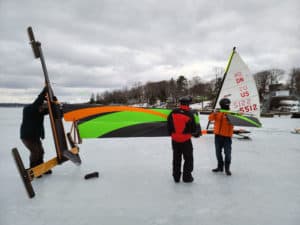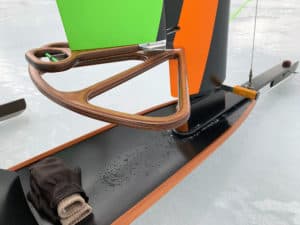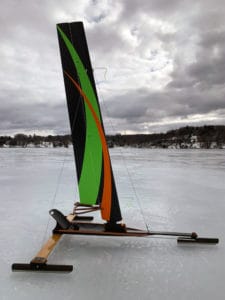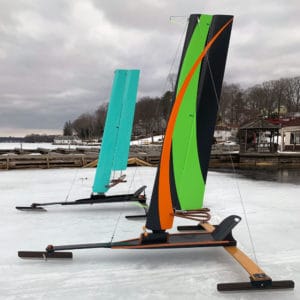Jim Gervolino nudged Dan into helping him put together a wing mast that could work with various hulls. Here’s his story on the WING.
Several years ago, when Tom Nichols moved from New Jersey to Maine, he had to get rid of the wing he built in the ’80s for his front-seat C-Class Skeeter. I convinced Jim Gervolino to take it.

Jim Gervolino’s C Class Skeeter w Wing
Jim spent that summer rebuilding that wing from its three-element, low aspect ratio shape to a more modern two-element (wing & flap), high aspect ratio shape, similar to those of John Eisenlohr’s wing land sailing boats.
Jim put his wing on a new conventional cockpit C-Class Skeeter boat he built and sailed it three times in 2020.

An Icebird
It worked so well that Jim came to me in the spring and tried to convince me to build a wing so he’d have someone to “play” with. We were standing in my shop beside a wall of photos. I told him I wasn’t interested in building another iceboat, but if we could put a wing on a boat I already had, like, say, “that” one (as I pointed to a picture of an Icebird), then maybe I’d be interested. Jim laughed and said, “You’re not serious, are you?”
We collaborated on the shape of the wing until we agreed on an airfoil. I wanted a taller wing for light wind, but Jim wanted a shorter wing so he wouldn’t be overpowered in heavy air. So, we agreed on making the top three feet (six sq.ft.) removable. It turned out to be the perfect compromise, and it has already proven itself with wind gusting over 25 on our maiden voyage.
Jim proposed that he’d build the wings, and I’d build the hulls. Jim is retired. All summer, he’d keep sending me progress photos and asking, “when are you going to start building the hulls?” By September 2020, I could no longer procrastinate. I used a medical table mold from work to shape the hulls. The design is simple because it doesn’t need to provide for “sheeting” loads like most iceboats since the wings have none.
I may have been a little bit hoodwinked into this whole WING project, and I wasn’t exactly thrilled to be involved at first. These boats are like toys, and I was used to building A-Class Skeeters. It wasn’t until my first ride that I saw the light and couldn’t be happier now. The wing works better than I ever imagined. And, the entire boat, including the wing, fits inside my Yukon XL. No 36-foot long box trailer necessary. My back doesn’t hurt from lugging heavy Skeeter hulls and stepping 28′ masts. My neck doesn’t hurt from laying down and trying to hold my head up like in DN. In fact, except for a bathroom break, there was no reason to stop sailing. It’s like iceboating in your lazy-boy recliner. I sailed for hours, and the next day, miraculously, I got out of bed without an aching body.

Chauncy Griggs Skeeter with wing mast
But, Jim deserves most of the credit. He rebuilt the first wing proving the concept. He researched everything and studied John Eisenlohr’s wing-building videos, of which we used much of the same ideas. And, he kept the project progressing over the summer when most of us were out on the water having fun. Not too many people have the motivation to work on iceboats when it’s 90 degrees outside, even most iceboaters.
We look forward to others using their DN parts and building themselves a wing, and we’d be happy to answer any questions they might have. We talked about a name for this new class (Ice Wings, Hot Wings, Grasshoppers). Probably just calling them “Wings” and adding a number next to the “W” for sail area, like W28 for our 28 square foot wings, is best. If someone makes a bigger wing as Chauncey Griggs did, it’ll be called W75. I wish Chauncey had lived long enough to have seen these. He would’ve been proud, even if it took 30 years for someone to join him. I did get the “handlebar” idea for controlling the wing rotation from one of his boats.
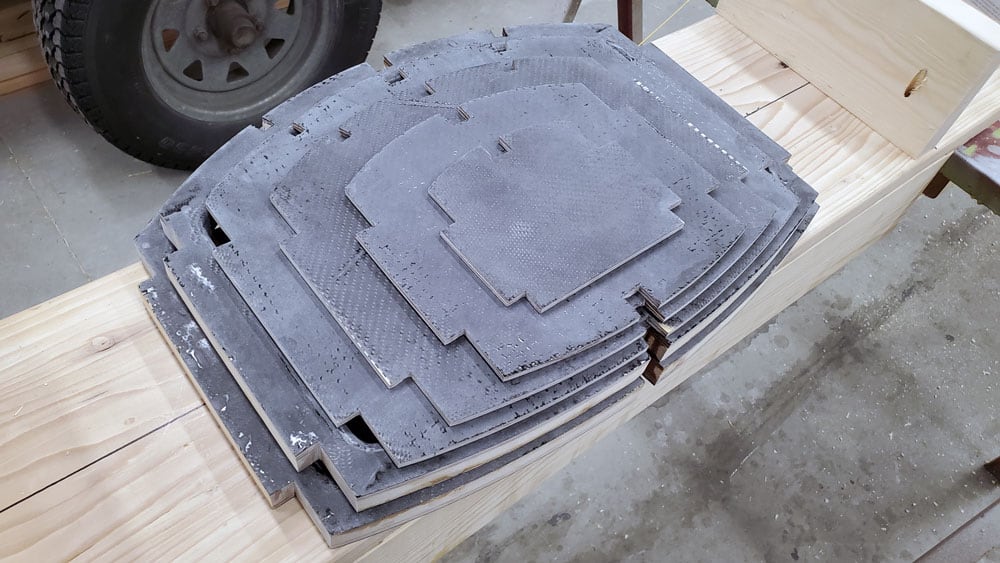
The other day I was so inspired by everyone else’s summer iceboat projects that I had to start one of my own. So I went on the internet and ordered up a complete iceboat frame kit from ACME Iceboats Inc. (www.acme-iceboats.com).



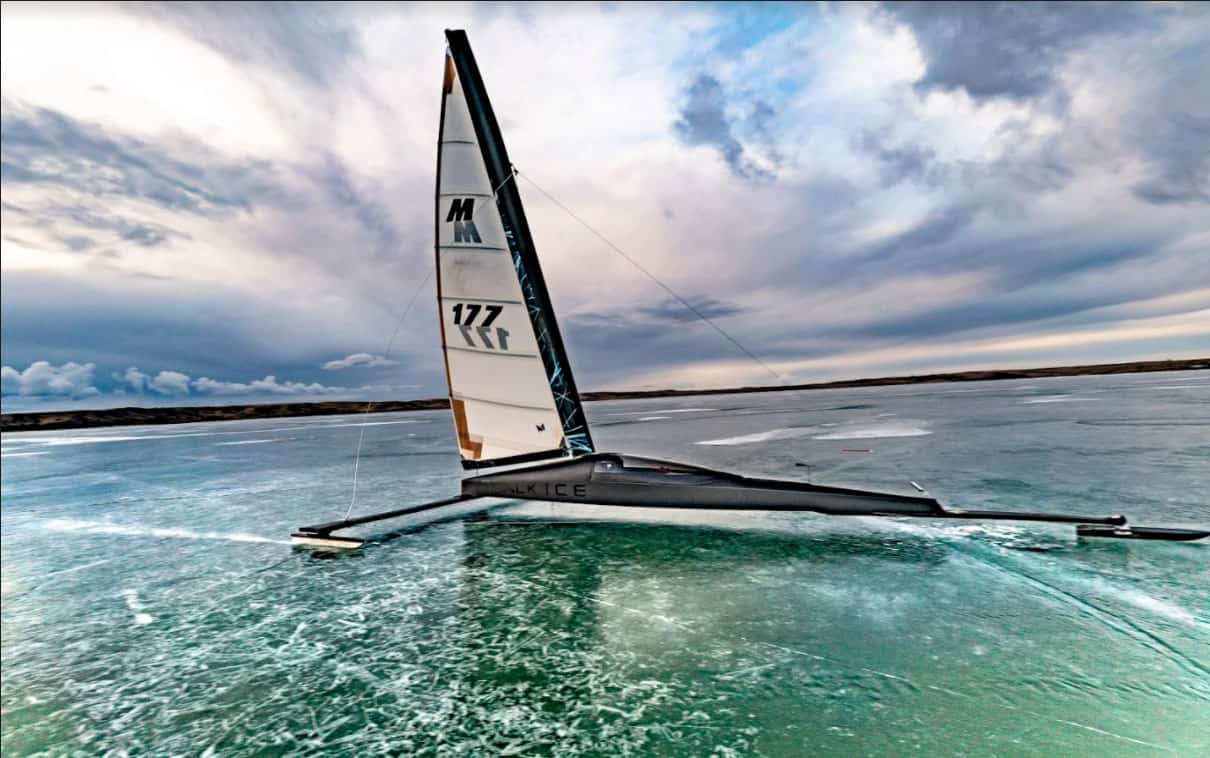
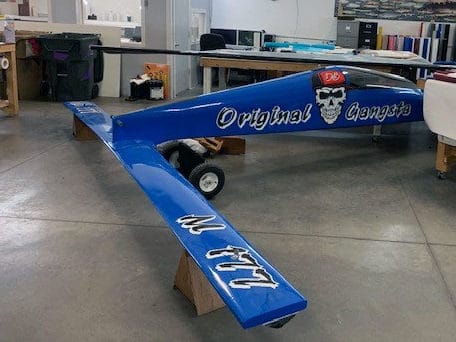
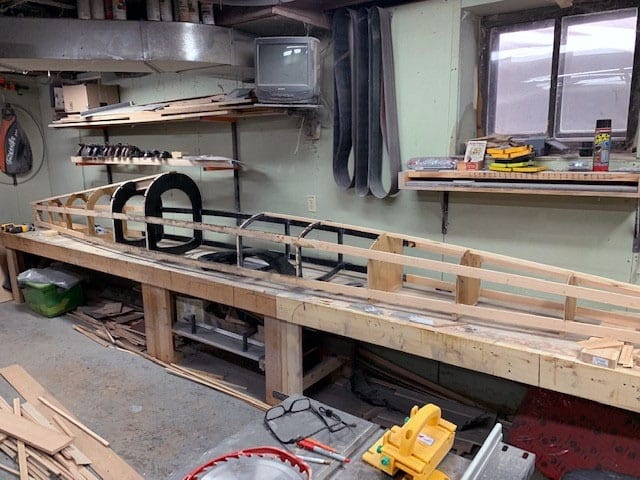
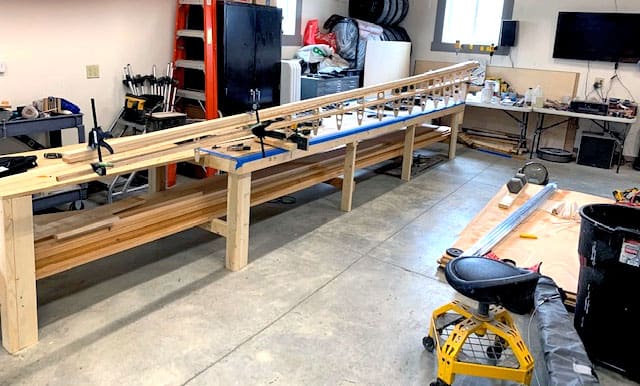

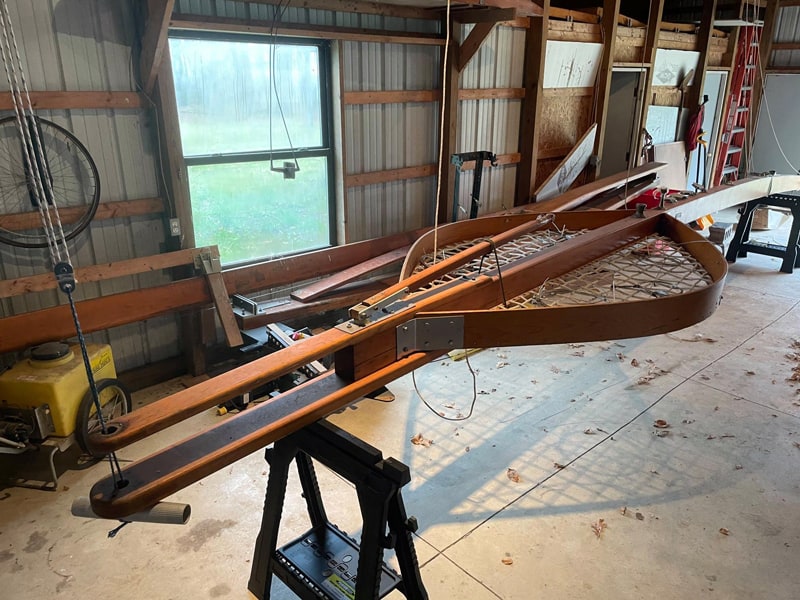
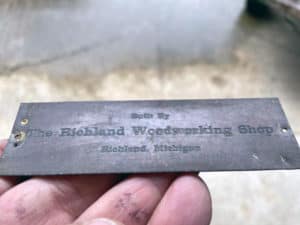

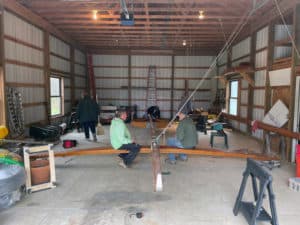
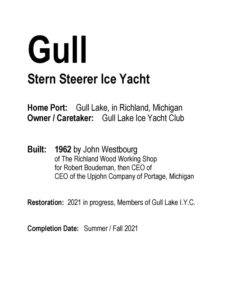
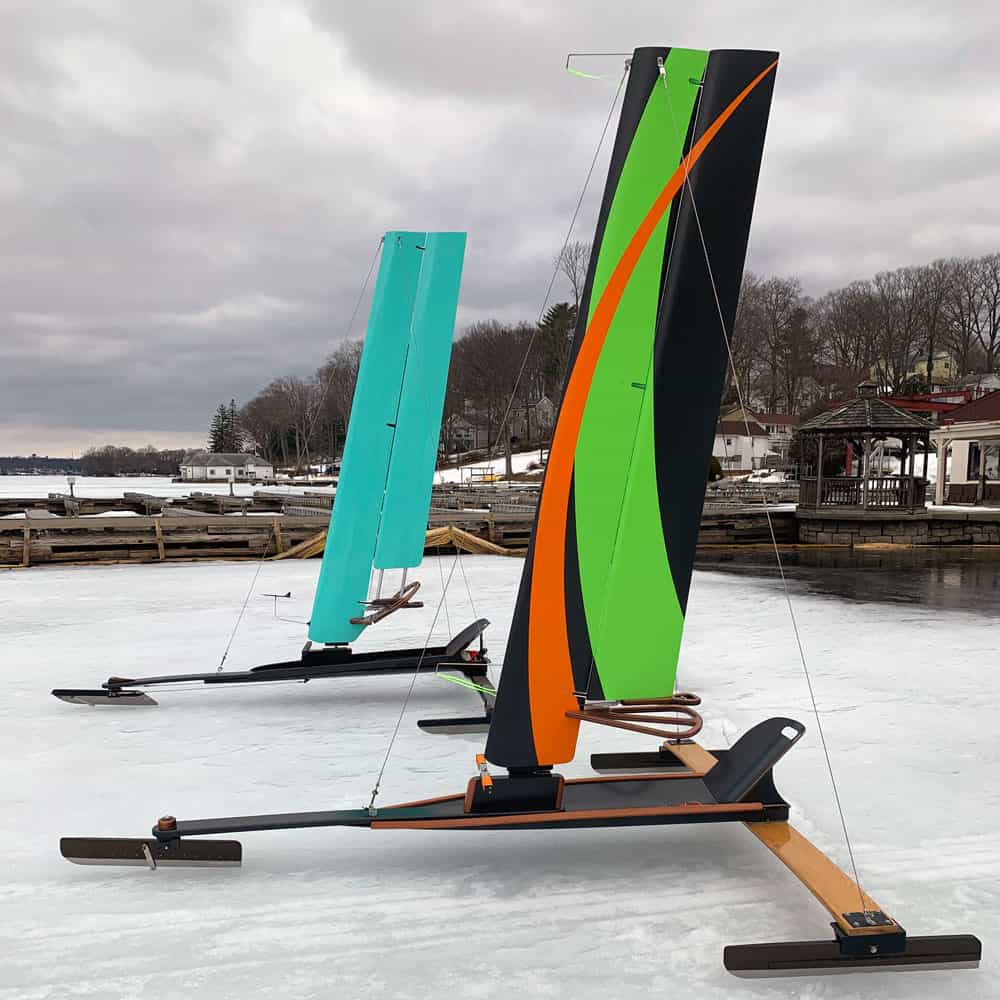 New Jersey Dan Clapp is best known for his innovative A-Class front-seater Skeeter designs and dominating the Skeeter class championships for two decades. He won nine International Skeeter Association regattas and seven Northwest titles. In the past years, he realized that the magnitude of effort to campaign the Skeeter became too much and too time-consuming. The lack of travel partners also contributed to his decision to sell his INSANITY, one of the
New Jersey Dan Clapp is best known for his innovative A-Class front-seater Skeeter designs and dominating the Skeeter class championships for two decades. He won nine International Skeeter Association regattas and seven Northwest titles. In the past years, he realized that the magnitude of effort to campaign the Skeeter became too much and too time-consuming. The lack of travel partners also contributed to his decision to sell his INSANITY, one of the 


